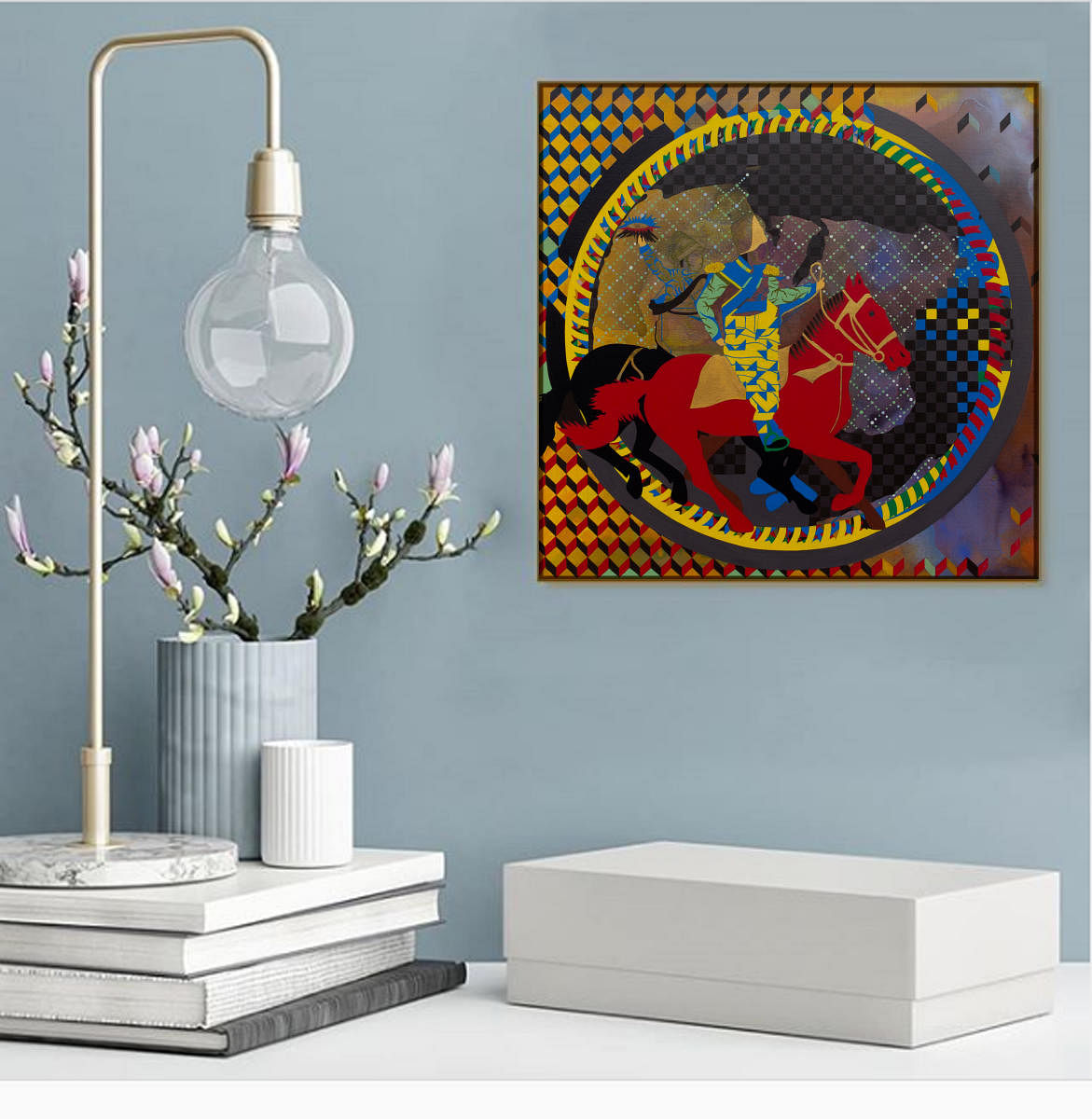
In an art museum, most oil paintings have beautifully ornate frames that are a work of art themselves. Most of these are in dark wood, with gilded borders, exquisite carvings and have an antiquated look. Such frames are rarely used these days; wooden frames are being increasingly replaced by lighter and less expensive synthetic ones.
In today’s age of minimalism, many contemporary paintings are not framed and you will see that the painting extends to the edges of the artwork.
In most of these cases, the edges are broader than the usual size and have thicker stretchers. These provide structural support to the painting in the absence of an external frame. In fact, adding a frame to a contemporary painting may at times prove to be a distraction.
Protection for the painting
However, a frame not only demarcates the painting visually, but also protects its edges and provides support to the artwork. Here are a few pointers to effective framing, which will help in preserving the artwork.
If wood is used for framing, it is essential it is seasoned appropriately, so that it does not warp in response to temperature and humidity changes. Also, since wood is susceptible to wood borers and other kinds of pests that can spread to the painting and cause damage, it must be pre-treated.
Paintings on paper can get damaged easily as paper is fragile and prone to wear and tear when completely exposed. It goes without saying that a good quality paper contributes to the longevity of the painting.
It is equally essential to use good quality backing material and adhesives for framing purposes to increase the life of the artwork. An inferior grade backing for the painting can shrink or warp and damage the artwork. Similarly, acid-free mats and mounts should be used.
The mat allows for room between the paint and the glass and space for air circulation.
Cheap quality mats will yellow with age and may also become brittle over time, which in turn can affect the painting or drawing. A floating frame is quite popular now and gives it an interesting look.
Acrylic sheet fronts are often used in framing, as these are cheaper and lighter in comparison to glass. Again, make sure these are of good quality.
Another option is ultraviolet (UV) protective glass, which is quite expensive, but should be considered for high priced artworks. This protects the painting from the damaging effects of UV light to prevent it from turning ‘yellow’ and reduce fading with time.
It is not advisable to put a glass front on an oil painting; it is best to leave it open and let it breathe.
The idea is to preserve the freshness of colours and pigments and maintain the original condition of the artwork as much as possible. Based on the material and medium of the art, whether it is an oil, acrylic, watercolour painting or a drawing in pencil, charcoal or pen and ink, the best framing options can be considered.
Therefore, it is important to choose a good framer who is familiar with fine-art framing and its requirements and has access to quality materials.
The author is a Bangalore-based art consultant, curator and writer. She blogs at Art Scene India and can be reached on artsceneinfo@gmail.com
Dab Hand is your fortnightly art world low-down. It will tell you all about what fresh ideas are out there, what to collect and what to admire from afar. And, of course, what not to.